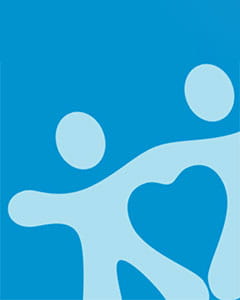What you need to know about human trafficking in our community
Written by Pratima Shanbhag, MD
I have been a Pediatric Resident Physician at Arnold Palmer Hospital for the last year now. I spend most of my time in the hospital or in the clinic taking care of patients who have problems that I learned about in medical school- coughs and colds and rashes and fevers. This past month, I was given the opportunity to learn about a hidden problem that is afflicting out community: human trafficking.
When I heard about the facts, I felt pretty helpless knowing that there are children who live in OUR community who need help. However, I also learned what to look for - not only as a physician, but as a member of our community- and what each of us can do to help.
Human trafficking is a form of modern slavery
Human trafficking is a billion dollar international industry, and it is happening in the United States. In fact, Florida is #3 when it comes to having the most cases in the U.S. There are no official estimates of how many victims are being trafficked within the United States since research has mostly focused on global trafficking (an estimated 20.9 million victims). However, it is estimated that 199,000 cases of sexual exploitation of American youth occur yearly. And as of March, 77 trafficking cases have been reported in Florida this year alone.Trafficking involves both sex trafficking (prostitution, brothels, online services) and labor trafficking (domestic servitude, farm workers). When we think of human trafficking, we often picture a young girl being smuggled across the country and physically forced into the sex trade, or an illegal immigrant forced into domestic servitude as debt bondage.
While these horrific circumstances are realities, they are not the only versions of human trafficking. Not all victims are immigrants- they can be U.S. citizens, permanent residents, or visa holders. Not every case involves physical force- victims can be coerced by threats of legal consequences or lured by the promise of a better life. Not all labor is illegal labor- cases have been reported in businesses such as hotels and restaurants. And not all traffickers are pimps or gang members- they can be factory owners and family members.
How to recognize a victim of human trafficking
There are several signs that we can use to help identify these victims.- Notice how they behave.
- They may avoid eye contact
- They may act fearful, sad or anxious
- They may not speak for themselves
- They may have signs of physical abuse such as unexplained bruises, cuts, or patterned injuries
- They may appear thin or malnourished
- They may offer inconsistent stories
- They may not have knowledge of current location or time
- They may have difficulty telling you where they live or where their parents are
What can I do to help?
If you suspect or have information about suspected human trafficking, please contact one of the following organizations:- Concerning a child in Florida:
- The Florida Abuse Hotline at 1-800-96-ABUSE
- Concerning an adult in Florida:
- Florida Agency for Workforce Innovation Migrant and Season Farmworker Exploitation at 1-800-633-7581
- Concerning a child or adult anywhere else in the United States:
- The National Human Trafficking Resource Center at 1-888-373-7888
- The Department of Justice at 1-888-428-7581







